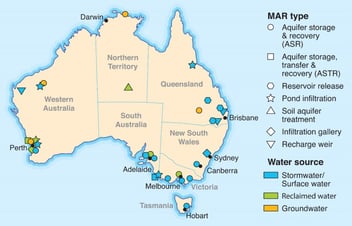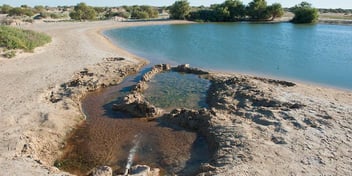Year in review: Water Source's top 10 most-read articles in 2022

The past year has been an exciting and sometimes dramatic one for Australia’s water sector, with the news and insights published on Water Source in 2022 reflecting a turbulent but progressive 12 months.
Floods, future-proofing and groundwater were among the rich range of topics that engaged our readers most this year, with Indigenous insights and non-flushables also attracting substantial attention.
Check out our most popular stories from 2022 below and join us again next year for more on the latest innovations, trends, member news and analysis.
1. Why groundwater remains misunderstoood – and undervalued
Groundwater plays a crucial role in ensuring water security around Australia, but mediating the impact on the environment of extraction for drinking water, irrigation and industry is an issue that requires more attention and understanding.
While the traditional approach to groundwater management has typically prioritised human needs and applications, there is now a much stronger understanding of the impact that extraction has on the environment.
2. Why stormwater management should start in the catchment
Stormwater management has gained a lot of exposure in the urban context – including treatment, harvesting and reuse opportunities – but working within the larger non-urban catchment can deliver huge offsetting benefits that may be of greater value.
Taking nature-based, whole-of-catchment approaches to stormwater management not only costs less than many urban water management solutions, but also provides a wide range of associated benefits from working with the environment.
3. Elder calls for more silence, more listening
In her opening keynote address at Ozwater’22, Aboriginal activist, educator and artist Dr Miriam Rose Ungunmerr Baumann AM made a stirring plea for more contemplation and more listening.
Dr Ungunmerr Baumann’s tribe name – Ngangikurungkurr – means deep water sounds, and the willingness and patience to listen for messages from the deep informs much of her teaching.
4. Flood frontlines in Lismore: what needs to change
The water community must move past historical data and focus on future risks for flood planning, said a leading figure in Lismore’s flood plain management efforts.
The intensity of recent flooding events across Australia highlights the need to take a risk-based approach to management and mitigation, and to recognise that historical data provides a limited benefit in predicting future events under a changing climate.
5. World-first flushable standard set to curb cost of sewer blockages
This past May, the Australian water community hailed the release of a world-first "flushable" labelling standard that outlined the criteria for materials suitable for flushing down the toilet in Australia and New Zealand.
The new standard requires products with the flushable symbol to pass six tests to ensure they are suitable for the sewers, including being able to readily break into pieces smaller than 2.45 cm after one hour.
6. Bringing water efficiency to disadvantaged households
Appliances with the highest energy and water-efficiency star ratings are also the most expensive, often making them unaffordable for people on low incomes.
To address this, Sydney Water collaborated with the NSW Department of Planning and Environment, along with a number of regional water utilities, to replace washing machines in households with social disadvantage.
7. Riding the wave of transformation
Australian Market Leader – Water at GHD Lindsey Brown shared her insights on why embracing change is crucial, along with her vision for the future of the Australian water sector.
“As most water professionals know, the role and expectations of the water sector are transforming dramatically,” Brown wrote. “The list of objectives, as well as the range of skills and services expected of a modern water utility, has grown exponentially. Where the past water utilities were custodians of public health, today’s water utilities are much more complex.”
8. WA’s groundwater replenishment scheme set to double
Water Corporation has taken a leap forward in securing Perth’s water security with the commissioning of stage two of its groundwater replenishment scheme, which now has a total annual capacity of up to 28 billion litres.
The scheme involves applying advanced treatment methods to wastewater to purify it, then recycling it through underground aquifers deep below Perth, until it can be extracted, further treated and incorporated into the drinking water supply.
9. God’s eye view: unpacking satellite data’s potential for water
Satellite data is being used to better measure water resources of earth, but there’s huge potential for much deeper and broader applications, particularly when it comes to meeting water challenges.
The space-tech boom is bolstering deep and complex application of data for developing water management pathways, with recent studies into suitable pumped hydro locations offering a noteworthy example.
10. Music now fills old water tank in Cobar
In a world first, an abandoned old water tank in the NSW outback town of Cobar has been transformed into a globally recognised, sound-art installation – the result of an unlikely collaboration between an engineer, an architect and a composer.
Creating the installation involved fixing a five-meter-high cube within the 10-meter-high tank, in which classical music will play 24 hours a day, seven days a week on loop via a quadraphonic sound system, with speakers built into all four walls.


